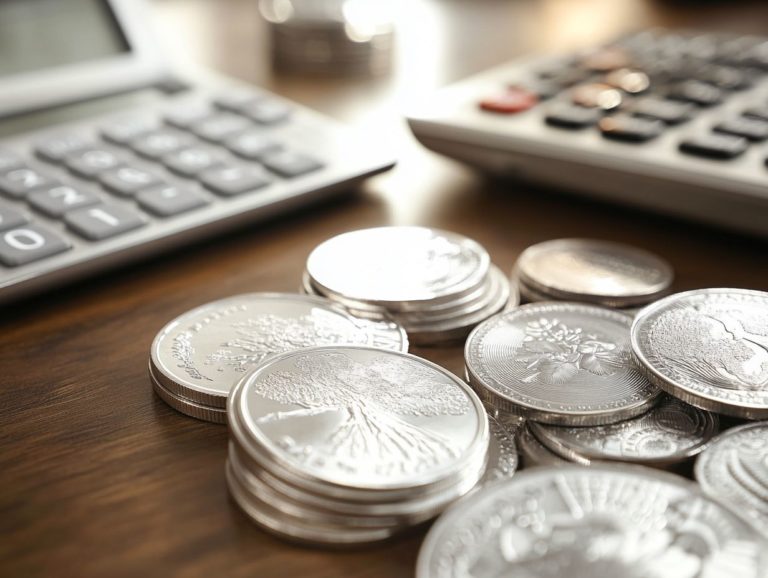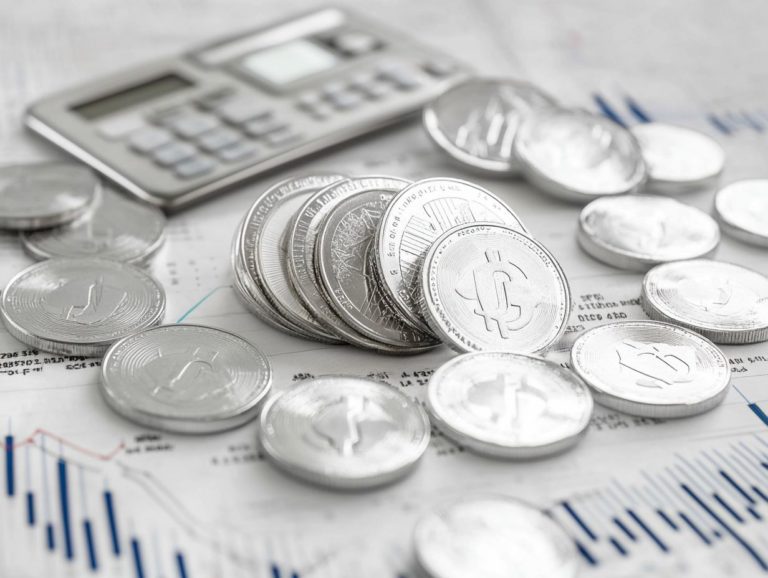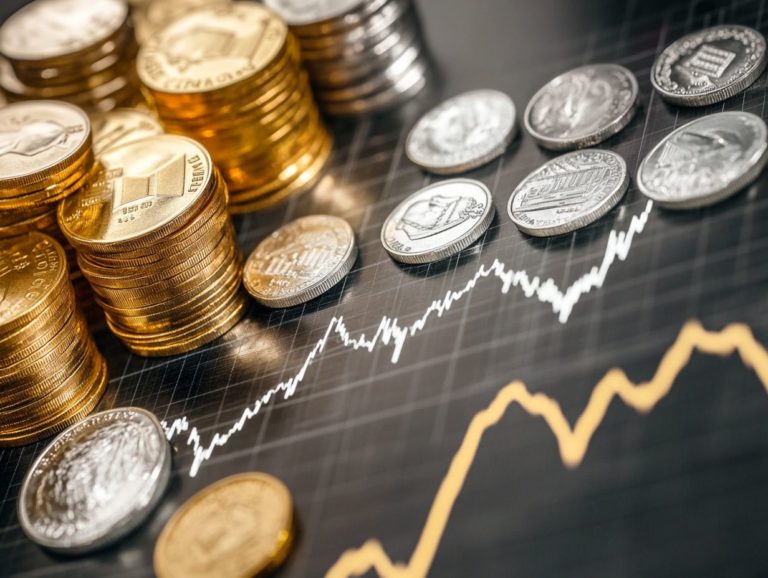Top 5 Reasons to Invest in Silver Now
In an ever-evolving economic landscape, silver emerges as a compelling investment choice for you, whether you re a seasoned investor or just starting out.
With its affordability, robust demand, and historical resilience, silver presents a unique combination of advantages that can elevate your portfolio.
Now is the perfect time to consider silver! This article discusses five key reasons to invest in silver right now, including its potential to protect your money from losing value and its various industrial uses.
We ll explore the current state of the silver market and offer insights to help you navigate this enticing investment opportunity.
Whether you’re aiming to diversify your assets or safeguard your wealth, read on to discover why silver could be the perfect fit for your investment strategy.
Contents
Key Takeaways:
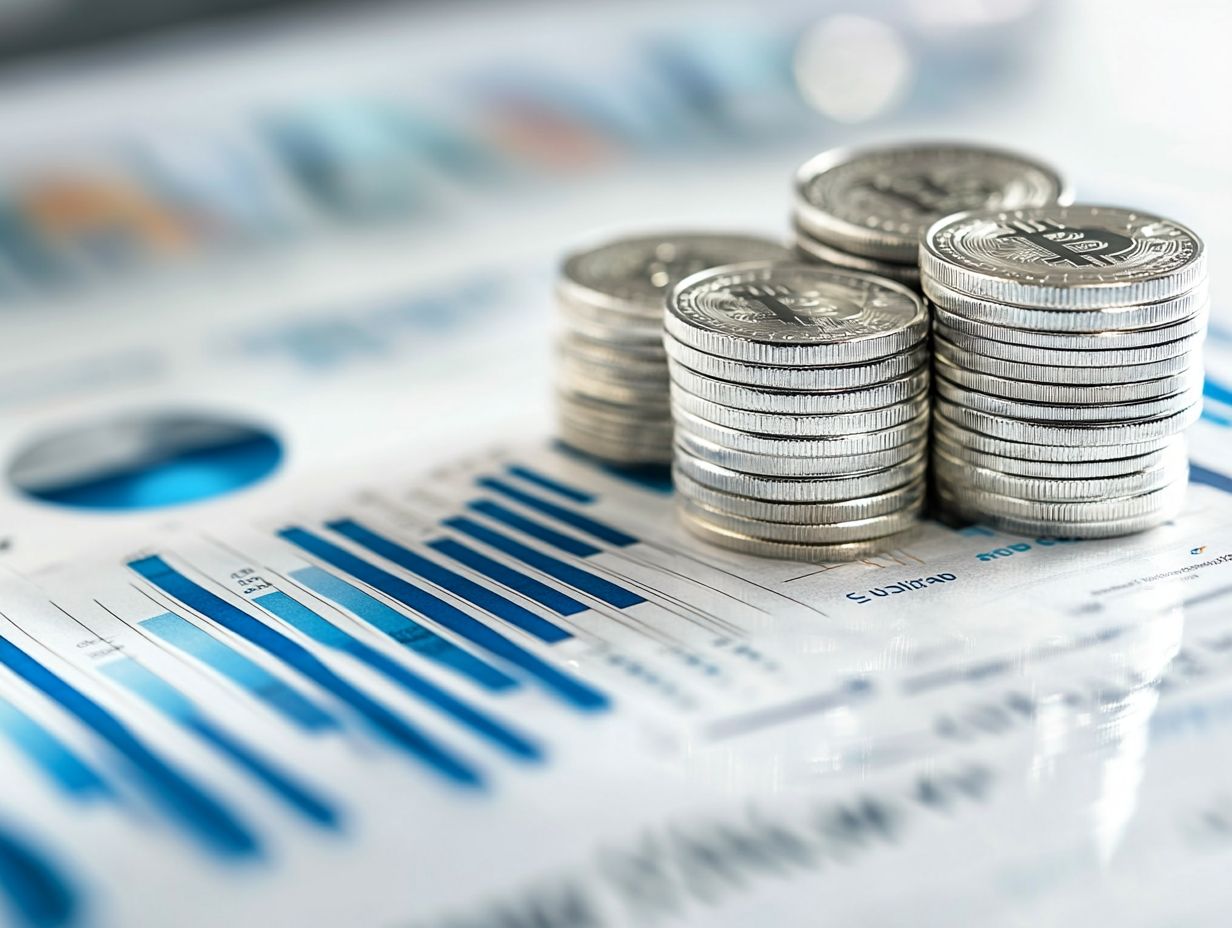
- Silver is an affordable investment option, making it accessible to a wide range of investors.
- With high demand and limited supply, silver has the potential for future value appreciation.
- History shows that silver has consistently held its value, making it a reliable investment option.
1. Silver Is an Affordable Investment Option
Silver often stands out as an appealing investment option, especially when compared to its pricier counterpart, gold. With silver s price significantly lower per ounce, it offers a remarkable opportunity for you to diversify your portfolio without needing to make hefty financial commitments.
Its historical role as a safe haven asset during economic uncertainties adds to its allure as a valuable component of any investment strategy. This accessibility makes silver investments particularly inviting, with options ranging from bullion bars to collectible coins.
This means you can participate regardless of your budget. While a single ounce of gold might set you back several thousand dollars, a comparable ounce of silver typically costs only a fraction of that, making it a practical choice for everyday investors.
Economic factors like inflation and market volatility often drive investors toward silver, reinforcing its reputation as a reliable protective asset during uncertain times. As more individuals recognize its potential benefits, the demand for silver continues to rise.
2. Silver Has High Demand and Limited Supply
The dynamics of the silver market present a fascinating opportunity for you as a potential investor, characterized by high demand and limited supply.
With many uses in technology, particularly in renewable energy sectors like photovoltaic cells and battery electric vehicles, the demand for silver is on an upward trajectory. At the same time, declining production in major mining countries deepens the scarcity of this precious metal, likely influencing silver prices over time.
Technological advancements in industries such as electronics and medicine are fueling your appetite for silver, thanks to its unique properties, including exceptional conductivity and antibacterial qualities.
You re not alone in this recognition; many investors are increasingly viewing silver as a way to protect against economic uncertainty, leading to a surge in purchases of bullion and ETFs.
Challenges exist in mining operations. High production costs and stringent environmental regulations can impede output. Additionally, geopolitical tensions in key silver-producing regions have the potential to create market fluctuations that could impact supply chains.
Stay informed about global events that could affect your silver investments.
Start exploring your silver investment options today!
3. Silver Has a History of Holding Its Value
Silver has a rich history of holding its value. It has been used as currency since ancient civilizations and remains important in today s commodities market.
During economic instability, silver often outperforms other assets. This makes it a reliable store of value, especially compared to fiat currencies.
In 1964, the U.S. government removed silver from coins due to rising inflation. This move sparked greater awareness of silver’s true value.
By 1980, silver prices skyrocketed to over $50 per ounce due to geopolitical tensions. This trend continued as investors turned to silver during the global financial crisis in 2011.
In 2022, inflation fears renewed interest in silver. These examples show silver’s consistent worth, even amid market fluctuations.
4. Silver Can Be a Hedge Against Inflation
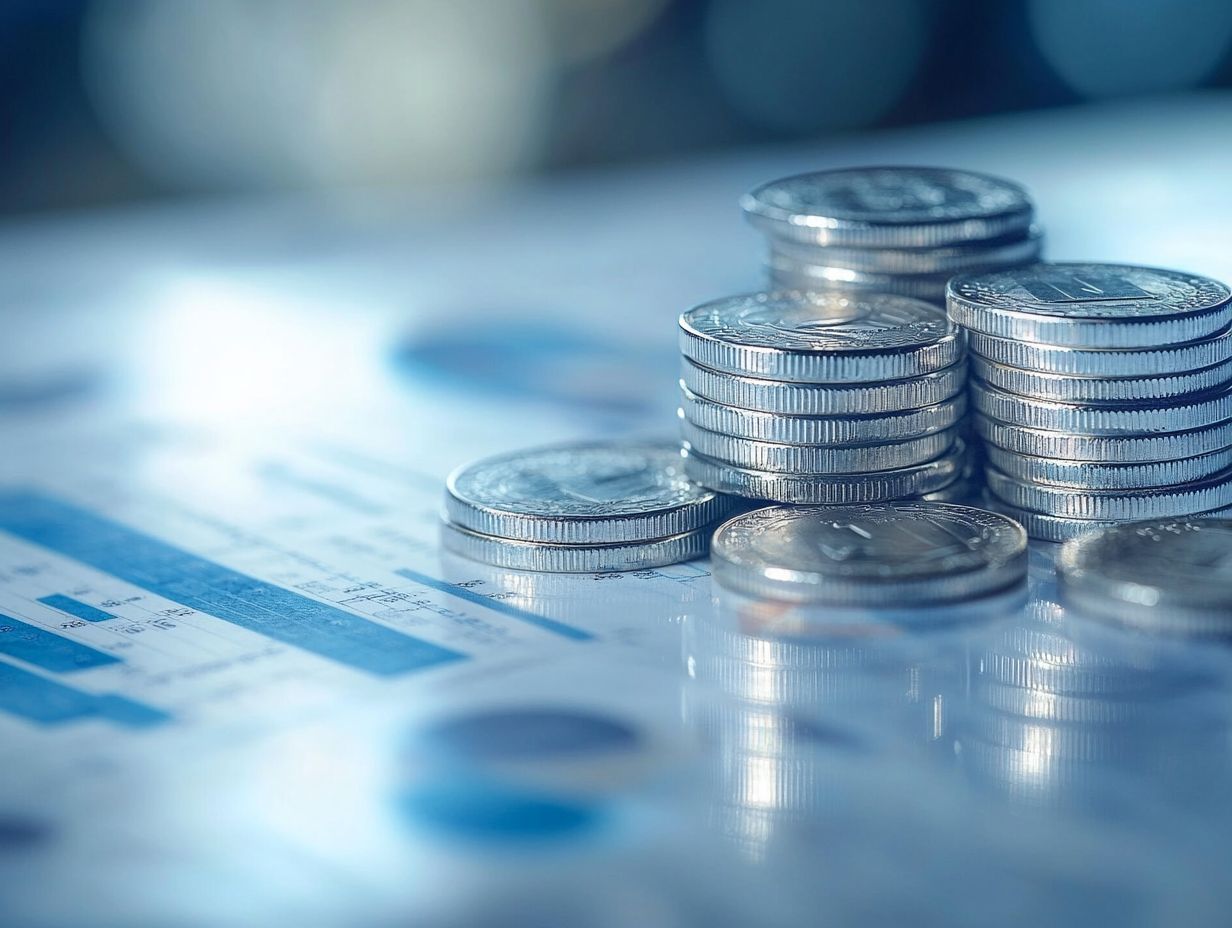
In an inflationary world, silver serves as a strong hedge against currency devaluation. As a tangible asset, it adds intrinsic value to your investment portfolio.
With rising inflation rates, many investors turn to silver. This precious metal not only offers beauty but also plays a crucial role in various industries.
Recent price hikes in consumer goods emphasize the value of tangible assets. If you want to safeguard your investments, silver could be an attractive option.
5. Silver Has Multiple Industrial Uses
Silver is much more than a precious metal; it has numerous industrial uses that boost its market value. Its high conductivity and reflectivity make it essential in renewable energy sectors.
In solar technology, silver paste is vital for efficient solar panels. This promotes cleaner energy solutions.
The automotive industry is booming with electric vehicle production. Silver components enhance battery performance and electrical efficiency.
These advancements highlight the growing demand for silver, likely driving its market price higher.
What Is the Current State of the Silver Market?
The current state of the silver market presents a nuanced tapestry of factors that influence silver prices and the investment options available to you. As demand for silver continues to surge driven by both industrial applications and investor interest the market grapples with supply constraints that can significantly affect pricing strategies.
Gaining insight into these dynamics is essential for anyone contemplating silver as a component of their investment portfolio.
Recent trends reveal that price fluctuations have been particularly pronounced. Geopolitical tensions and shifts in global economic policies play pivotal roles in this volatility. For instance, economic slowdowns in major markets can dampen industrial demand. Meanwhile, increased geopolitical risks may spur speculative buying as investors seek a safe haven.
Supply chain disruptions, often worsened by regulations in key mining regions, can lead to a scarcity of silver, pushing prices even higher. Now more than ever, it s crucial for you to stay informed about these large economic trends, as they can substantially influence your investment strategies in the silver market.
What Factors Influence the Price of Silver?
The price of silver is shaped by a myriad of factors, including market dynamics, economic indicators, and geopolitical events. Understanding these elements is essential for you as an investor looking to navigate the metals market wisely.
Fluctuations in demand and supply, alongside broader economic conditions like inflation rates and currency strength, play pivotal roles in determining silver prices.
On the demand side, industrial usage particularly in electronics and renewable energy greatly fuels interest in silver. Meanwhile, production levels from mining companies and the discovery of new mines can either ease or tighten market availability, directly impacting what you pay.
Major players, such as large mining corporations and institutional investors, wield significant influence over price stability and fluctuations. Global events ranging from economic crises to shifts in trade policies can introduce unexpected volatility, making it crucial for you to remain aware of the interconnected nature of the silver market.
How Can One Invest in Silver?
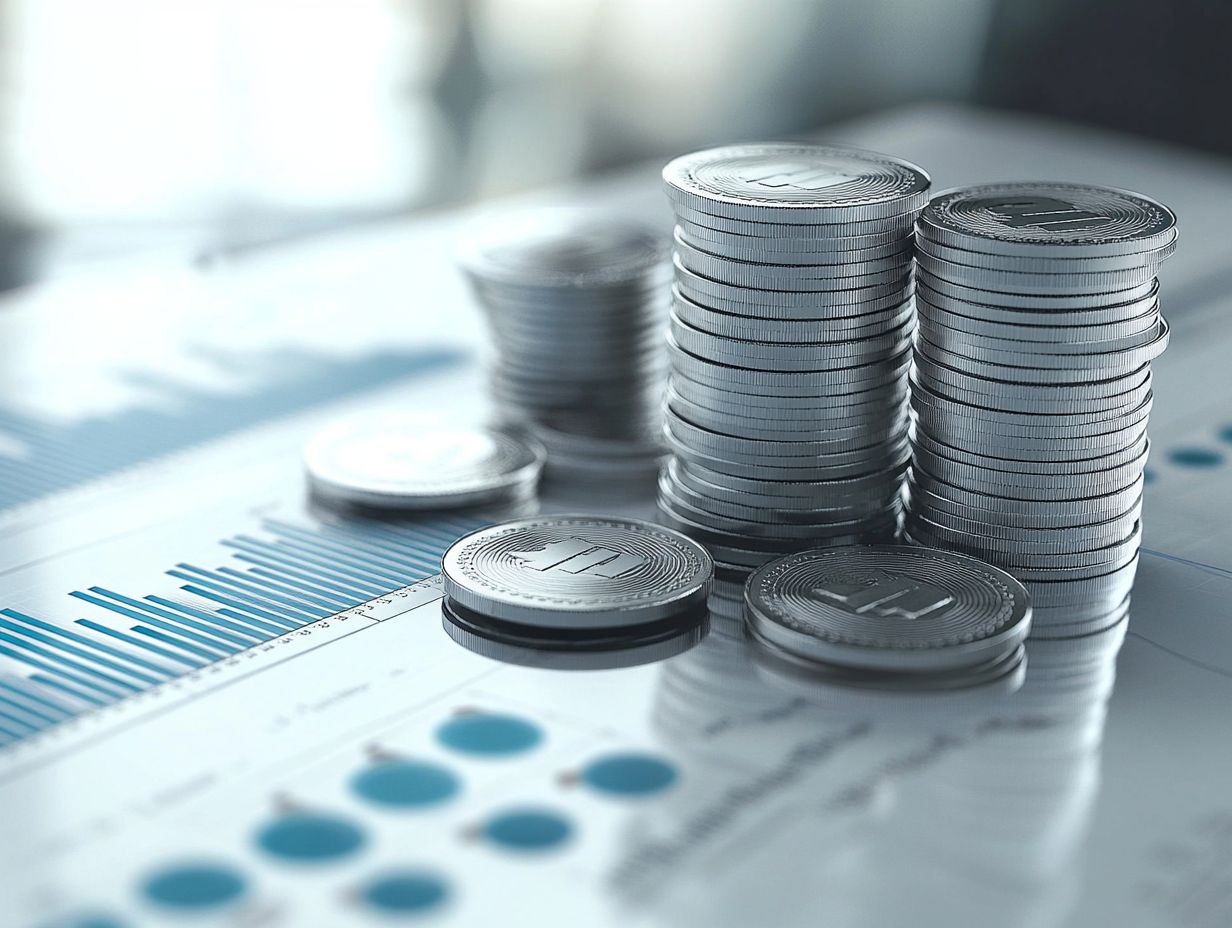
Investing in silver opens up a range of possibilities for you, whether through tangible bullion and coins or more financial instruments like ETFs and mutual funds. Each option presents its own set of advantages and considerations, tailored to your financial goals and risk appetite.
Understanding how to invest in silver can really boost your returns! For example, owning physical silver like bars and coins offers that rewarding sense of tangible ownership. However, it also means you should consider secure storage solutions to protect against theft or loss.
On the flip side, ETFs and mutual funds provide liquidity and convenience, making them appealing for those who prefer a more hands-off approach. Just keep in mind that management fees can nibble away at your returns.
Diversifying your portfolio with these different silver investment options can act as a shield against inflation and economic downturns. However, it’s crucial for you to carefully evaluate the potential benefits alongside the risks tied to each investment method.
What Are the Risks and Benefits of Investing in Silver?
Investing in silver comes with both risks and benefits that you need to consider carefully. Silver can serve as a hedge against inflation, meaning it can help protect the value of your money during times when prices are rising. It also provides a safe haven during economic downturns, offering opportunities for those who understand market dynamics.
However, you must stay alert to market changes and the potential for price volatility. These factors can significantly impact your overall investment strategy.
Knowing these elements is crucial because silver’s value can be influenced by industrial demand, geopolitical tensions, and shifts in investor sentiment. Historical data shows that silver often performs well during economic uncertainty, yet its price can be swayed by global market trends and currency fluctuations.
To navigate these complexities effectively, consider adopting informed strategies such as:
- Diversifying your portfolio
- Setting clear investment goals
- Staying updated on market indicators
Continuously educating yourself about market trends and implementing risk management techniques can greatly enhance your experience in the silver market.
What Are the Long-Term Predictions for Silver?
Long-term predictions for silver show a promising picture, driven by increasing industrial demand and potential supply constraints. As developing countries continue to industrialize and the demand for renewable energy technologies grows, you may see significant changes in the silver market. By understanding these emerging trends, you can make strategic decisions regarding your silver investments.
The role of silver in emerging technologies, such as electric vehicles and solar panels, is vital. With more solar energy installations and a move towards greener alternatives, silver’s unique properties make it essential in various applications.
Geopolitical factors, like trade tensions and resource nationalism, could influence silver prices, leading to unpredictable market dynamics. Staying tuned to these trends and their wider implications is essential, especially if you are considering or currently own silver assets.
Get ready for both exciting opportunities and challenges ahead!
How Can One Diversify Their Investment Portfolio with Silver?
Diversifying your investment portfolio with silver can improve your overall returns while lowering risk, making it an appealing choice for both experienced and new investors. By adding silver to your asset mix, you can leverage its unique characteristics as a commodity that often moves independently of traditional financial markets. This strategy not only acts as a hedge against inflation but also provides more flexibility in your investment choices.
Silver is considered a safe haven asset, providing a buffer against market volatility. By integrating it with assets such as gold, real estate, and stock options, you can build a well-rounded portfolio. For example, you might allocate a specific percentage to silver and distribute the rest across diversified equities or bonds. This balanced approach can help protect your investments during downturns or uncertain economic times.
Additionally, silver’s industrial uses present growth opportunities, so strategically combining it with growth-oriented assets can boost your overall returns without sacrificing stability.
Frequently Asked Questions
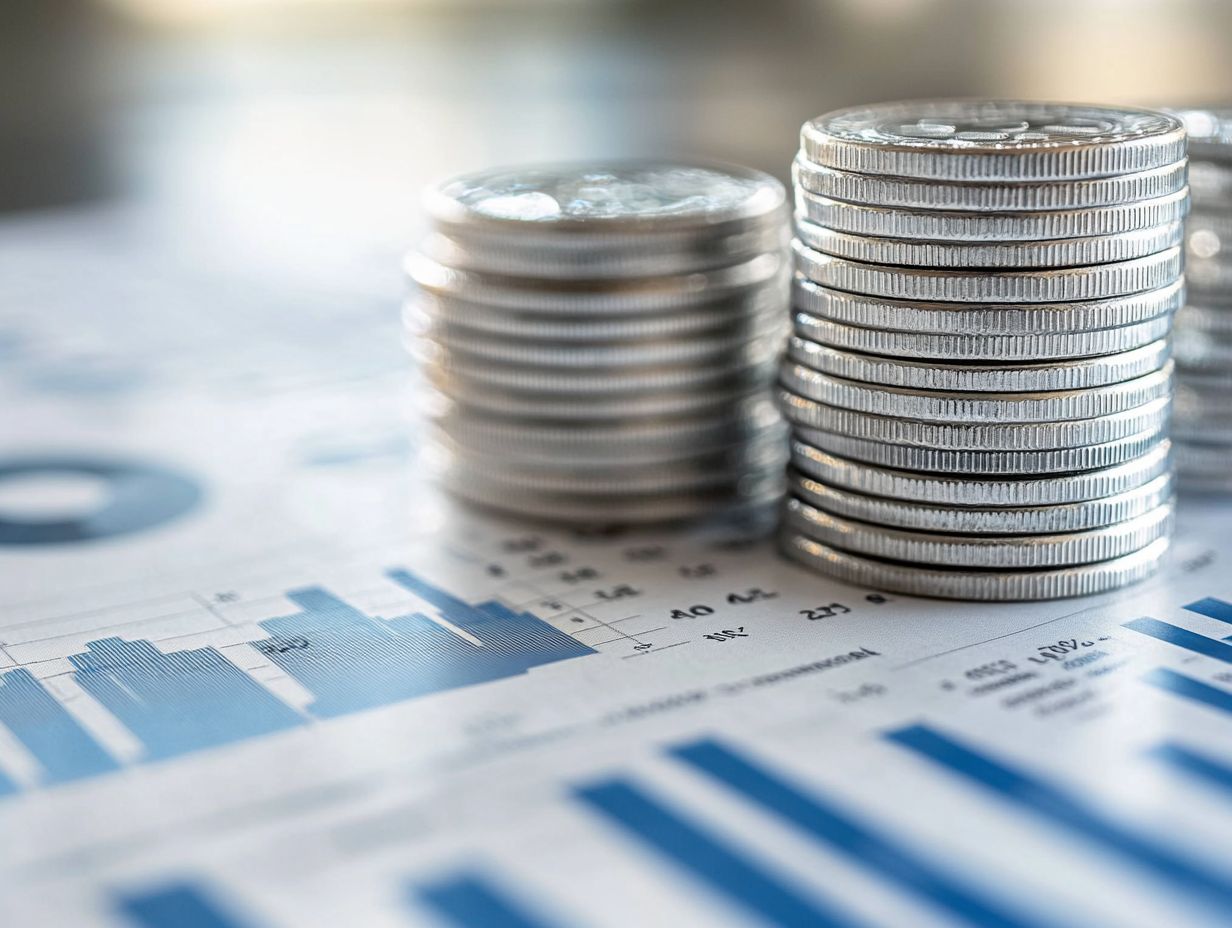
Ready to dive into silver investing? Start your journey today!
What are the top 5 reasons to invest in silver now?
- Diversification: Silver is a safe-haven asset. It helps protect your investment portfolio against market volatility.
- Price Potential: As demand rises, silver prices may increase, potentially leading to profits.
- Industrial Demand: Used in electronics and solar panels, steady industrial demand can positively impact silver prices.
- Limited Supply: Silver is a physical asset with a finite supply, making it valuable as demand grows.
- Inflation Protection: Historically, silver is seen as a hedge against inflation, helping to preserve purchasing power.
How does silver investing compare to other metals?
Silver is an affordable alternative to gold. While gold is more popular, silver offers similar benefits at a lower cost.
What are the risks of investing in silver?
Like any investment, silver comes with risks. Prices can be volatile, and global events may impact value.
Can I invest in silver through my retirement account?
You can use a self-directed IRA, which allows you to invest in physical silver. This may provide tax benefits and diversify your retirement portfolio.
How can I invest in silver?
You can buy physical silver, invest in mining stocks, or purchase ETFs that track silver prices. Research your options before making an investment decision.
Is now a good time to invest in silver?
Your financial goals and risk tolerance matter. Many experts believe current market conditions favor silver investment.
Conclusion
Investing in silver now could be a smart move. Explore your options and seize this opportunity!











